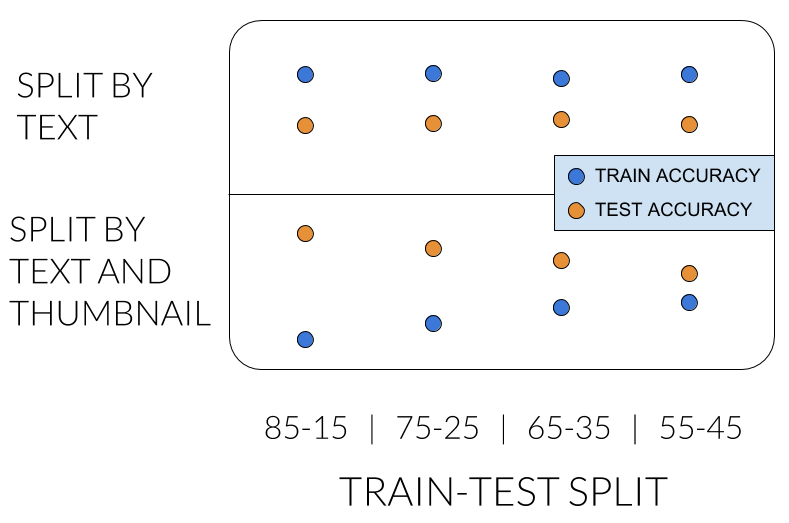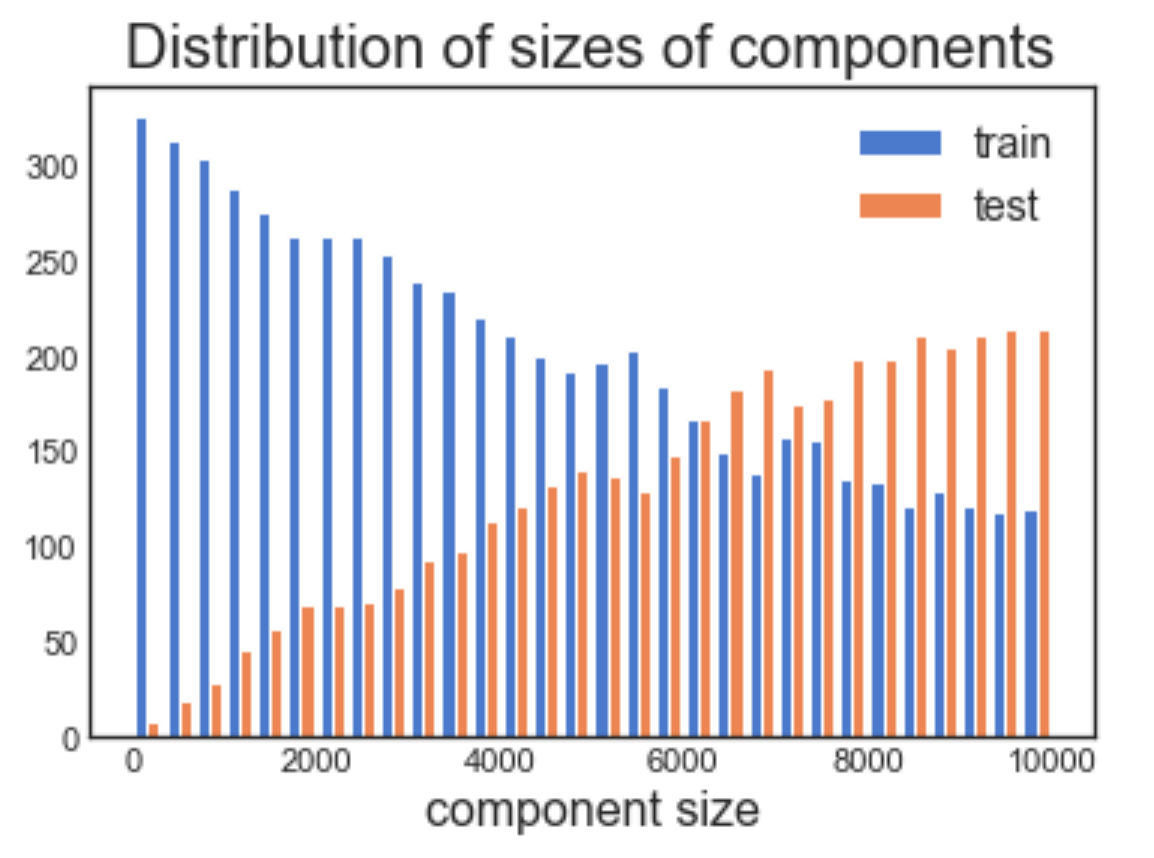About a year ago we incorporated a new type of feature into one of our models
used for recommending content items to our users. I’m talking about the
thumbnail of the content item:

Up until that point we used the item’s title and metadata features. The title is
easier to work with compared to the thumbnail — machine learning wise.
Our model has matured and it was time to add the thumbnail to the party. This
decision was the first step towards a horrible bias introduced into our
train-test split procedure. Let me unfold the story…
Setting the scene
From our experience it’s hard to incorporate multiple types of features into a
unified model. So we decided to take baby steps, and add the thumbnail to a
model that uses only one feature — the title.
There’s one thing you need to take into account when working with these two
features, and that’s data leakage. When working with the title only, you can
naively split your dataset into train-test randomly — after removing items with
the same title. However, you can’t apply random split when you work with both
the title and the thumbnail. That’s because many items share the same thumbnail
or title. Stock photos are a good example for shared thumbnails across different
items. Thus, a model that memorizes titles/thumbnails it encountered in the
training set might have a good performance on the test set, while not doing a
good job at generalization.
The solution? We should split the dataset so that each thumbnail appears either
in train or test, but not both. Same goes for the title.
First attempt
Well, that sounds simple. Let’s start with the simplest implementation. We’ll
mark all the rows in the dataset as “train”. Then, we’ll iteratively convert
rows into “test” until we get the desired split, let’s say 80%-20%. How is the
conversion done? At each step of the loop we’ll pick a random “train” row and
mark it for conversion. Before converting, we’ll inspect all of the rows that
have the same title/thumbnail, and mark them as well. We’ll continue doing so
until there are no more rows that we can mark. Finally, we’ll convert the marked
group into “test”.
And then things escalated
At first sight nothing seems wrong with the naive solution. Each thumbnail/title
appears either in train or in test. So what seems to be the problem?
First I’ll show you the symptoms of the problem. In order to be able to compare
the title-only model to the model that also uses the thumbnail, we used the new
split for the title-only model too. It shouldn’t really make an impact on it’s
performance, right? But then we got the following results:

In the top row we see what we already know: the title-only model has higher
accuracy on train set, and accuracy isn’t significantly affected by the ratio of
the split.
The problem pops up in the bottom row, where we apply the new split method. We
expected to see similar results, but the title-only model was better on test.
What?… It shouldn’t be like that. Additionally, the performance is greatly
affected by the ratio. Something is suspicious…

So where does the problem lurk?
You can think of our dataset as a bipartite graph, where one side is the
thumbnails, and the other is the titles. There is an edge between a thumbnail
and a title if there is an item with that thumbnail and title.

What we effectively did in our new split is making sure each connected component
resides in its entirety either in train or test set.
It turns out that the split is biased. It tends to select big components for the
test set. Say the test set should contain 15% of the rows. You’d expect it to
contain 15% of the components, but what we got was 4%.

Second try
What was the problem with what we did? When you randomly sample a row, the
probability of getting a row from a specific component is proportional to the
component’s size. Therefore, the test set ended up with a small number of big
components. It may be counterintuitive, but here’s a code snippet you can try to
experience it yourself:
import numpy as np
import matplotlib.pyplot as plt
def train_test_split(component_sizes, test_size):
train = component_sizes
test = []
while sum(test) test_size:
convert = np.random.choice(range(len(train)),
p=train.astype('float') / sum(train))
test.append(train[convert])
train = np.delete(train, convert)
return train, test
component_sizes = np.array(range(1, 10000))
test_size = int(sum(component_sizes) * 0.5)
train, test = train_test_split(component_sizes, test_size)
plt.hist([train, test], label=['train', 'test'], bins=30)
plt.title('Distribution of sizes of components', fontsize=20)
plt.xlabel('component size', fontsize=16)
plt.legend(fontsize=14)

The components size distribution is different between the train and test set.
Now that we formalized better what we were doing by means of bipartite graph, we
can implement the split by randomly sampling connected components, instead of
randomly sampling rows. Doing so, each component gets the same probability of
being selected for the test set.
Key takeaway
The way you split your dataset into train-test is crucial for the research phase
of a project. While researching, you spend a significant amount of your time on
looking at the performance over the test set. It’s not always straightforward to
construct the test set so that it’s representative of what happens at inference
time.
Take for example the task of recommending an item to a user: you can either
recommend a completely new item or an item that has been shown to other users in
the past. Both are important.
In order to understand how the model is doing offline in the research phase,
you’ll have to construct a test set that contains both completely new items, and
items that appear in the train set. What is the right proportion? Hard to say… I
guess it can be a topic for another post on another day 🙂
Originally published by me at
engineering.taboola.com.
Halo, para pencinta slot! Pernah mendengar istilah “slot demo”? Kalau tidak, bersiaplah jatuh hati sama konsep ini. slot gaco merupakan mesin slot yang sering kasih win. Ya, mesin-mesin ini bisa dikatakan adalah jagoannya tuk bawa pulang hasil. tapi, cemana sih
tekniknya nemuin slot gacor yang tepat? Santai Bro and Sis, kita bahas {santai|tenang] aja di sini
Game terbaik waktu ini hanya satu berada Indonesia hanya di pasti menyediakan imbal hasil terbesar



